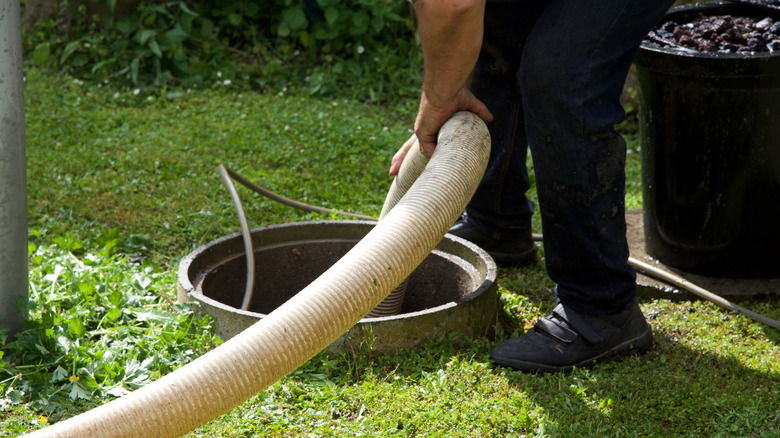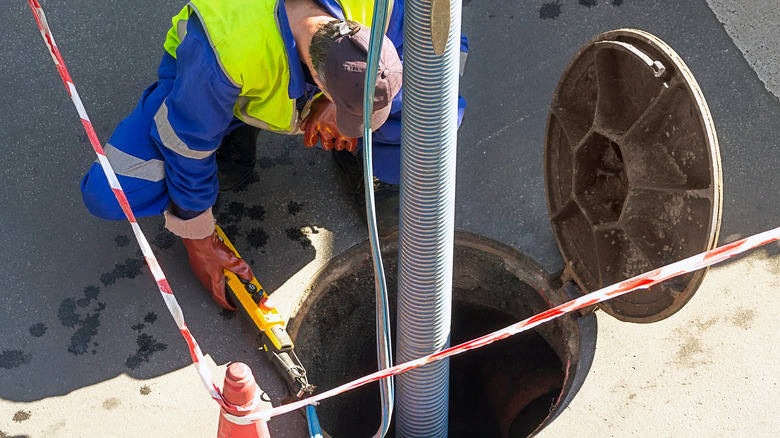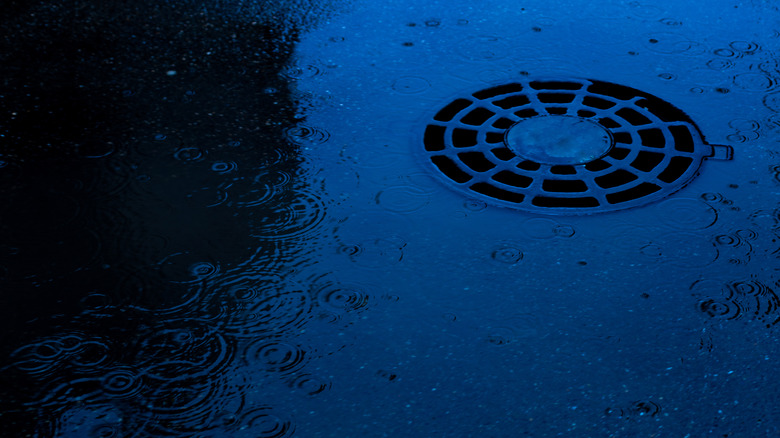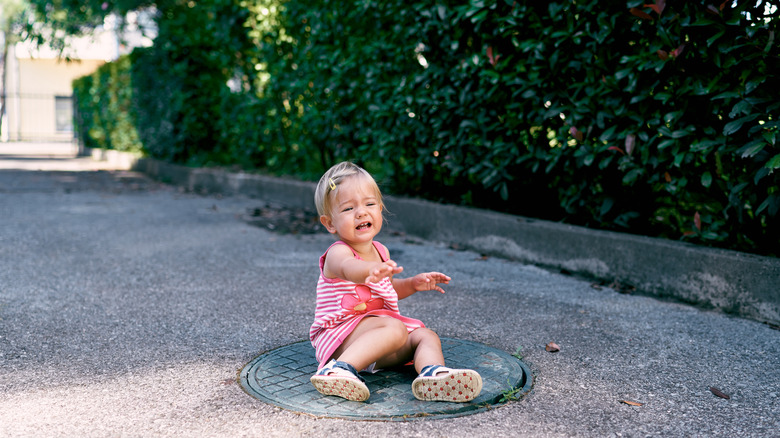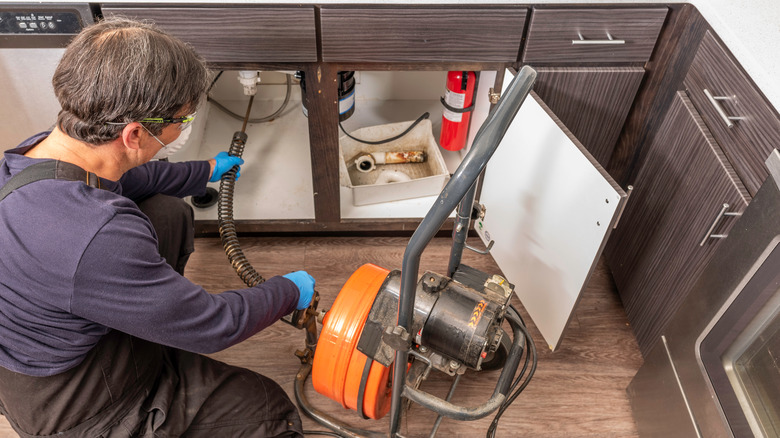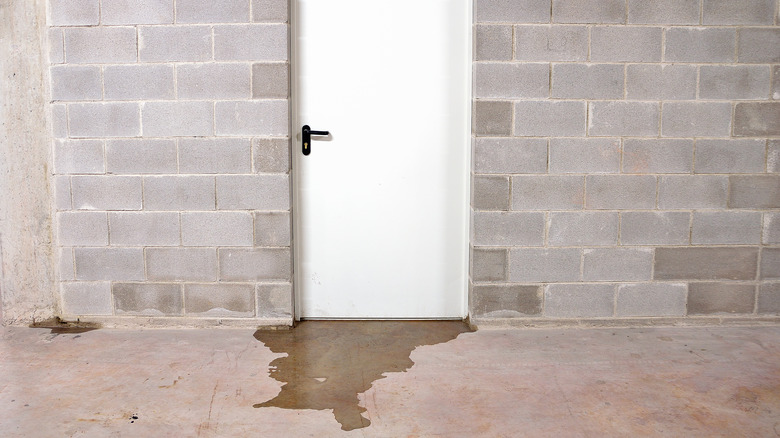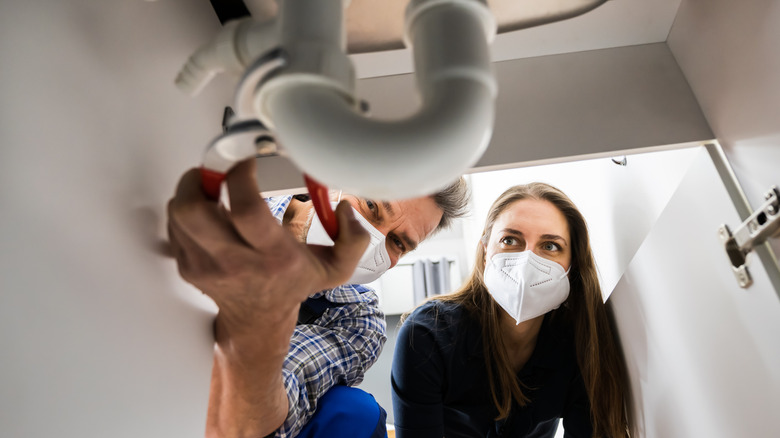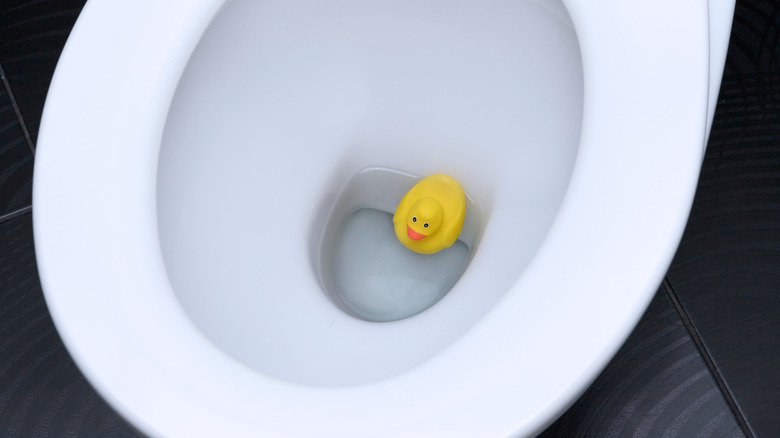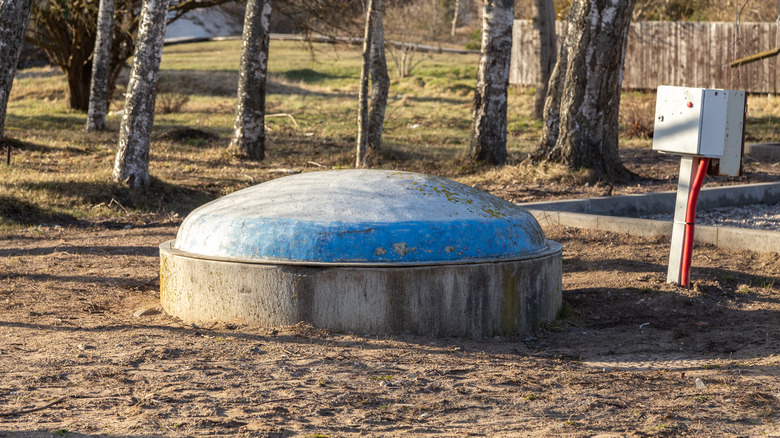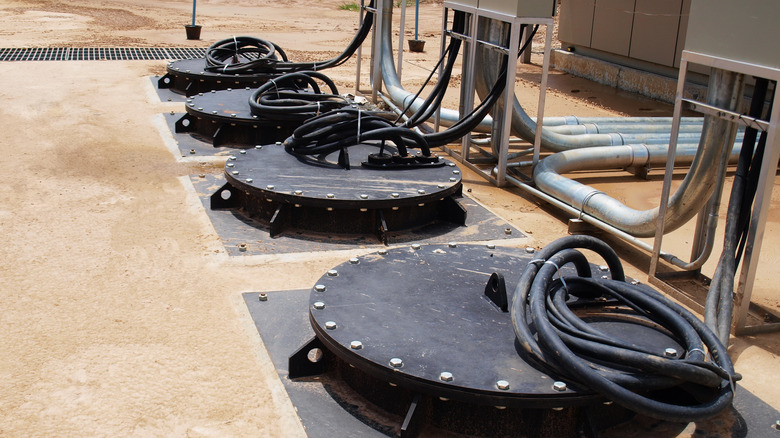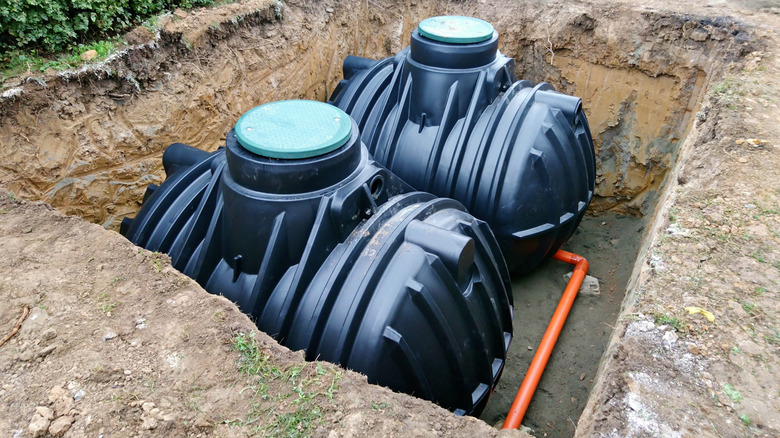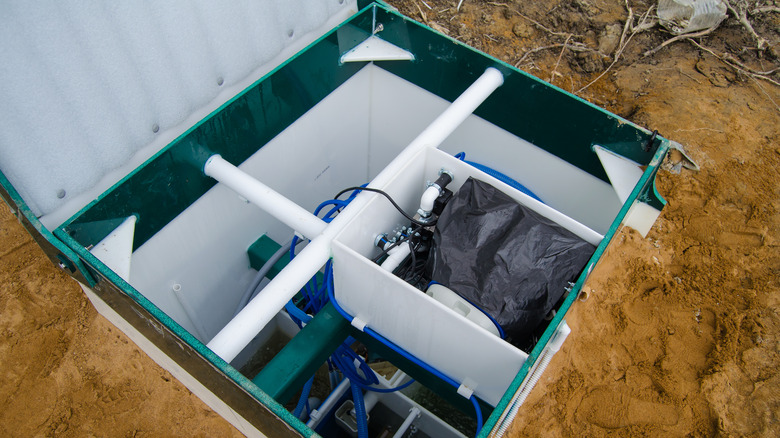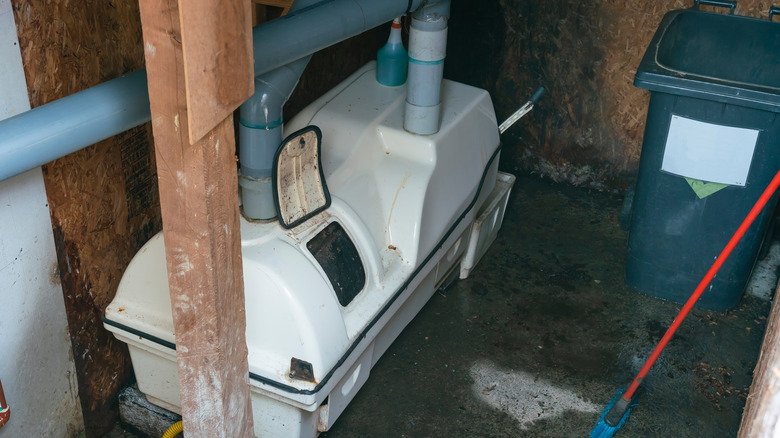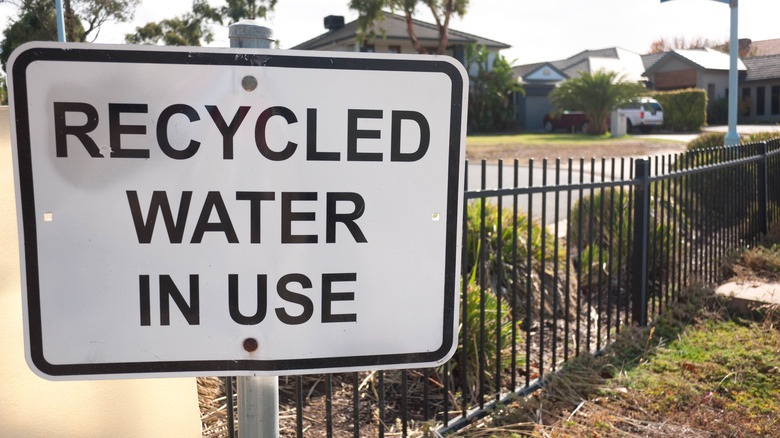What You Should Know About Sewer Systems Before Buying A House
If your home has a working sewer system, you probably don't spend much time thinking about it. Your wastewater goes down the sink, and you never see it again. Where the waste goes, how it gets there, and how much it costs are all issues worked out in advance with more or less permanent solutions.
However, the reality is that plumbing fails. Engineers and plumbers make errors. DIYers plan poorly or misunderstand a system. According to Dick Ray Master Plumbing Heating and Cooling, you should never skip the sewer inspection when purchasing a home. However, what do you do if you're installing a new basement bathroom and the drains are below the level of your sewer lateral, the pipe that drains into the sewer main? Or what if you believe the "flushable wipes" lie and end up with a clogged sewer line six months later (via Envirosight)? What if you have no idea about how sewers work? Well, you've come to the right place. Here is what you need to know about sewer systems before buying a house.
Start with the municipal sewer basics
There's an old saying that waste rolls downhill, and that's the first operating principle behind sewer systems. According to Home Reference, waste flows from your home's sewer line through its sewer tap into progressively larger sewer mains until they arrive at a sewage treatment plant. Of course, sometimes stuff needs to roll uphill, so lift stations are used along the way to pressurize sections of sewers called force mains, giving them the power to defy gravity (via Envirosight).
Sewage is filtered and separated into liquids and solids at the treatment plant. The wastewater is then aerated and bio-filtered through media full of bacteria to consume the remaining organic matter (via Forbes). In some cases, an advanced treatment stage is added at this point to remove particular pollutants based on the water's makeup and the environmental sensitivities of the waterways it's being sent. For example, farming areas are prone to adding excess nitrogen and phosphorus to local waters. Extra care is required to remove these elements from the water (via United States Environmental Protection Agency). After being disinfected with chlorine or UV light, the treated water goes into rivers, lakes, and coastal waters.
Sewer systems are not just for sewage
We typically think of sewers as a bunch of pipes that whisk away our personal and household waste. However, there's another form of dangerous wastewater you might not know: rain. What we're really talking about is stormwater runoff. This water causes several problems, including flooding, chemical contamination, and disease. According to Envirosight, managing stormwater is a process that involves adapting to the environment by re-routing, storing, and treating water. Sewers prevent runoff from building up on the streets and in urban areas. When stormwater flows through a sewage system alongside other wastewater, those systems are called combined sewer systems.
Strictly speaking, stormwater management isn't just about water quality and treatment. Some stormwater issues, such as erosion and flooding, can have the same infrastructure implications as clean water (via Moore Engineering). These problems occur when excess stormwater in urban areas does not re-absorb into the ground.
Calculate your costs
If you're having more fun than you expected reading about sewage, the fun ends here. While the cost to connect to a municipal sewer system varies wildly by circumstance, geography, and local fiscal sensibilities, it typically falls between $529 and $2,262, as reported by Home Advisor. The connection to the city sewer system can cost anywhere from $500 to $20,000. (This number usually includes your connection to city water as well.) This cost often has more to do with local fiscal strategies than with your particular needs, although if a sewer main has to be extended to meet your needs, that will be a costly venture.
While it's tempting to save a buck by doing this work yourself, make sure you understand the project before starting (via CostHelper). To install a sewer lateral, you will need to go through an application and permitting process, trenching from the home to the sewer main, running lines to the sewer main, managing inspections, and decommissioning or destroying any septic system that was in use before.
What to do when things go wrong
The homeowner is typically responsible for the maintenance and repair of the private sewer lateral. According to Sewer Pros, this is the section of pipe (upper and lower lateral) between the home and the sewer main. Given the expense of repair, you'll be hoping it's on the city's dime when your sewer backs up.
While two of the five most common sewer backup causes are the city's responsibility, you will need to spend money to figure out the cause. Even when the issue is the city's fault, you will still have sewage on your floors, and you'll probably have to pay to find out where the problem lies (via Inside & Out Property Inspections). One way to find out what's going on below is a sewer scope inspection, which usually costs less than $300. Common causes for backups include structural defects in the sewer lateral, insufficient sewer infrastructure, the incursion of tree roots, a blockage in the sewer main, and excess sewage and stormwater (via Pipe Spies).
Sewer failures can cause major problems
Backups aren't the only sewer problems. You might also deal with leaky or burst sewer pipes if you're unlucky. According to Accurate Leak and Line, there are many signs of such failures, including slow drains, spongy floors, and unusual plant growth in your landscape. Symptoms like wet floors, foundation cracks, mold growth, and water pooling outside could be signs of leaky sewer lines. However, there could also be other causes like leaky water lines or a leaky roof.
It's essential to understand the cause of a leak to effectively eliminate it and avoid future problems (via The Punctual Plumbers). Underground sewer line breaks, which you might spot from a soggy lawn or unexplained depressions in your yard, are caused by worn-out clay pipes, tree roots, or earthquakes. While you're diagnosing, remember that the sign of a problem is often nowhere near the actual cause. Look for leaks upstream and downstream.
Pay attention to unpleasant odors
According to NIR Plumbing, most sewer issues (including odors and related health problems) result from improper plumbing installation or entropy. Perhaps a smell in your new home is caused by a relatively minor maintenance issue. For example, if you smell an unpleasant odor around your sink, you might need to run some water through it. This solution will fix the drain's water trap and prevent sewer gasses from entering your home (via The Spruce).
Many maintenance problems have corresponding design or installation flaws. You can often zero in on the issue by figuring out where the smell originates. If it's coming from the base of your toilet, for example, start by inspecting the toilet's wax ring. If the problem stemmed from an addition or somewhere you suspect previous DIY work, be on the lookout for signs of inexperience in the plumbing design and execution (via Family Handyman).
Take care of your sewer connection
Any sewer issue is a big issue, so you should avoid potential sewage problems as much as possible. According to Pipe Spies, the best way to care for your sewer lines is to watch what goes into them. Only flush down single-ply toilet paper, avoiding food waste, feminine hygiene products, wipes, and grease. If you have a toddler, watch out for flushed toys, utensils, curtains, uncooked rice, bags of cooked rice, loose chair legs, and remote controls.
If you suspect a tree root problem, have a contractor clear the line of roots as a part of routine maintenance. Depending on the severity of the problem, you can repair or line your older pipe before replacement is necessary. One helpful idea is to install a backflow preventer to help keep downstream issues out of your basement (via Sewer Pros). You should also periodically flush your drain system with a safe cleaner to unclog and minimize buildup. Finally, speaking of flushing, consider using a high-volume toilet, which will help you avoid clogs in the future (via Dengarden).
Know all your options
Okay, so that was a lot of potentially bad news about your sewer system. According to Alternative Drainage, the good news is that sewer systems usually work flawlessly, despite all the odds against them. If you're determined to try something different, there's good and bad news. Alternatives range from septic systems, which you've probably heard of, to alternative sewer, septic, and toilet systems. The bad news is you probably can't install any of these options. Even if you can, it will cost a small fortune to install.
Alternative sewer systems are usually for cities, not individual houses. DIY septic tanks are generally not allowed by building codes, which require a licensed septic installer (via Upgraded Home). The same is true for alternative toilet systems. Many areas do not allow them or restrict their use. Plus, there's the cost. A typical alternative septic system will cost around three times as much as a conventional system, often in the $20,000 range.
Learn about alternative sewer systems
Again, alternative sewer systems aren't something you can just decide to implement. However, you can advocate for them, band together with other people in your community, and maybe accomplish something. If you can't get your mind out of the sewer, here are some alternatives your municipality might consider.
According to Stony Brook University, pressure sewers (STEP and grinder pump varieties) use pumps to move wastewater through smaller sewer pipes. The tyranny of gravity makes way for electricity, failing pumps, and septic pre-treatment tanks. Small-diameter gravity sewers replace some or all the pumps with gravity but require on-site septic tanks like STEP pressure sewers. Vacuum sewers are a noisy and high-maintenance technology that pulls rather than pushes wastewater (via Fraunhofer IGB).
Distributed on-site (or "on-lot") sewer technologies usually rely on membrane bioreactors (filters with bacteria that actively treat sewage at a home or commercial site) (via LinkedIn). As a distributed system, this approach eliminates the need for pipes. Ultimately, any decision about alternative sewer systems would be based on the characteristics of the community involved and isn't likely to affect your home-buying decision.
Read up on septic systems
According to the United States Environmental Protection Agency, over 60 million people in the United States rely on septic systems instead of municipal sewers. Septic systems replace municipal sewage transport and treatment with a treatment process on your property. They are a low-tech version of the onsite sewer systems. To understand septic systems in greater detail, check out an online tool about the process (via Guadalupe-Blanco River Authority).
Typical septic systems are underground wastewater treatment plants installed where centralized sewer systems aren't available. The systems transport waste from your household plumbing to a tank and remove solids. They then go to a drain field where the treated water is put back into the environment. The size of a septic system depends on the number of bedrooms in a home. For example, an average three-bedroom home has a septic system costing $3,918 (via HomeGuide). As with sewer hookups, this price varies.
Consider alternative septic systems
As reported by Enviro Design Products, a typical septic system won't work on a property with soil drainage issues or environmental sensitivities. In this situation, you'll want to install an alternative system. As you might expect, this increases the price dramatically, and $15,000 price tags aren't uncommon (via Upgraded Home). These systems are known as Advanced (or Alternative) Treatment Systems (ATS) and include filtration systems and alternative drain fields. You can choose from mound systems, pressurized dosing, plastic chamber leach field, sand filter, aerobic treatment systems, and constructed wetland systems (via North Dakota State University). Mound systems and aerobic treatment systems are common choices. Most filtration and treatment-oriented approaches combine with pressurized dosing to improve efficacy and failed drain field rehabilitation.
These options will help you avoid septic system failure, an inevitable outcome of a traditional septic setup. However, alternative systems can fail as well. Only use an ATS if you can use a standard septic system as a backup in case of failure (via Rivers Alliance of Connecticut).
Research alternative toilet systems
If an alternative septic system is not adventurous enough for you, there are also alternative toilet systems. According to Cabin Life, there are two main types of toilets, including compost and occasionally incinerating toilets. Sun-Mar offers a central composting toilet that links several ultra-low-flush or waterless toilets to a composting chamber. This model is a relatively uncommon and expensive option. Before purchasing an alternative toilet solution for your home, carefully read forums and reviews to ensure quality and performance.
Acceptance of these systems in building codes varies by state (via Greywater Action). A few states allow the use of these toilets in place of traditional septic systems (though you will usually need to establish the feasibility of septic for future use). Other states will let you supplement a standard septic system with composting and incinerating toilets. For example, Oregon allows the construction of on-site composting toilets.
Understand greywater systems
If composting toilets aren't exactly your thing, consider greywater reuse systems. According to Greywater Action, these systems remove water that hasn't come into contact with feces for dispersion into your yard or garden. The systems use relatively clean water free of harmful chemicals and tend to be point-of-use setups to send water outside for watering plants.
Regulations vary from state to state, with five states explicitly allowing greywater systems that pipe water to the point of use (via Greywater Action). Arizona offers a tax credit for a permitted, properly installed, and used system (via Water Wise Group). One complicating factor is that greywater is for immediate use and should not be put in storage (via DIY Plumbing Advice). Another element to consider is that greywater cannot integrate into existing irrigation systems for various reasons, including the tendency to clog nozzles. Simple but dedicated distribution systems are required.
Why modern sewage systems matter
You might be asking yourself if all these fancy options are worth the trouble. After all, our ancestors didn't have dozens of different ways to remove poop from their caves, and they did just fine, right? Well, only if you define "just fine" as expecting to die by the time you're 34. According to AgeUp, 34 was the global life expectancy about 100 years before modern sewage systems. Other common ailments that arise from untreated waste include gastroenteritis, hepatitis A, poliomyelitis, campylobacteriosis, E. coli, leptospirosis, salmonellosis, dysentery, cryptosporidiosis, giardiasis, and others (via Lower Fredrick Township).
It might be tempting to sidestep bureaucracies and building codes for your sewage system. However, anyone who has experienced a septic system failure will tell you that following the letter of the law has its perks. So make sure your new sewage system is up to par before moving into your home.
